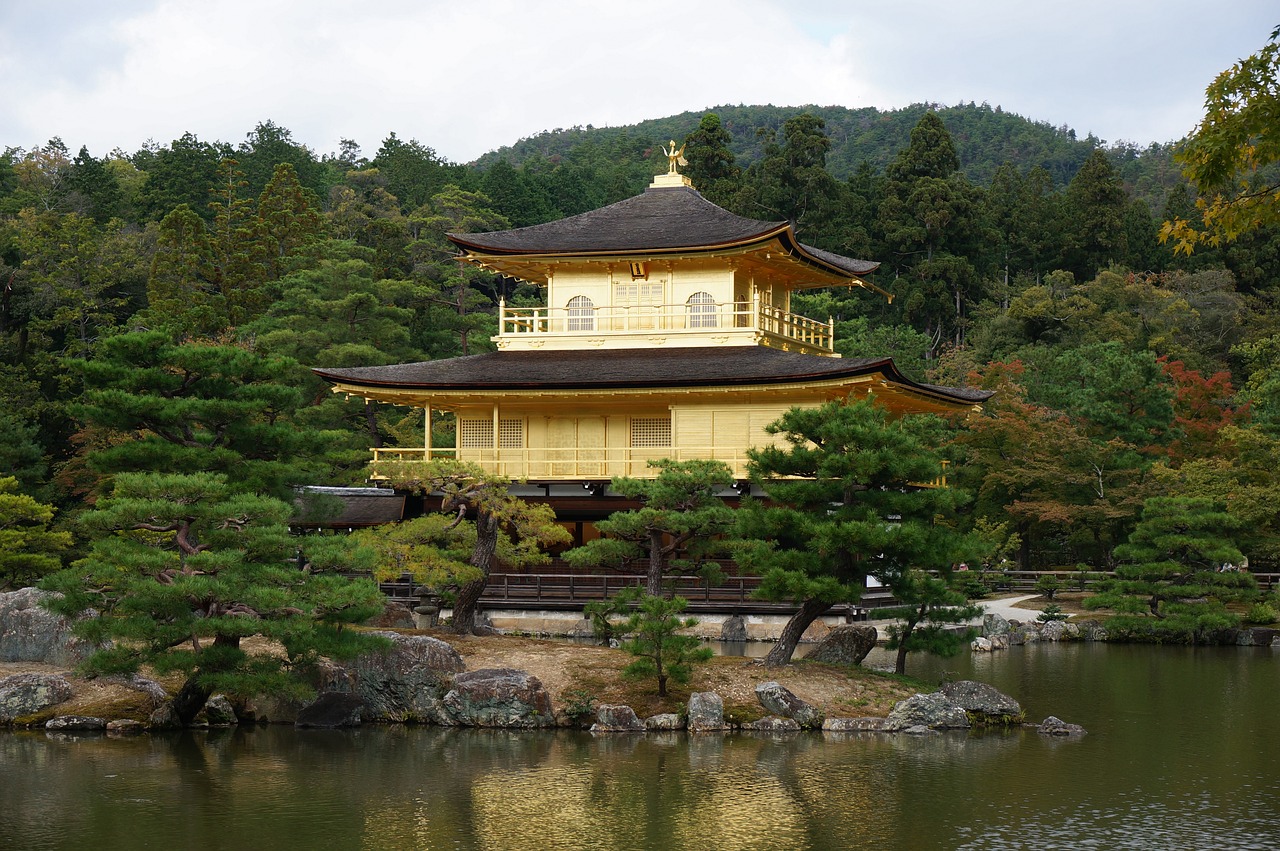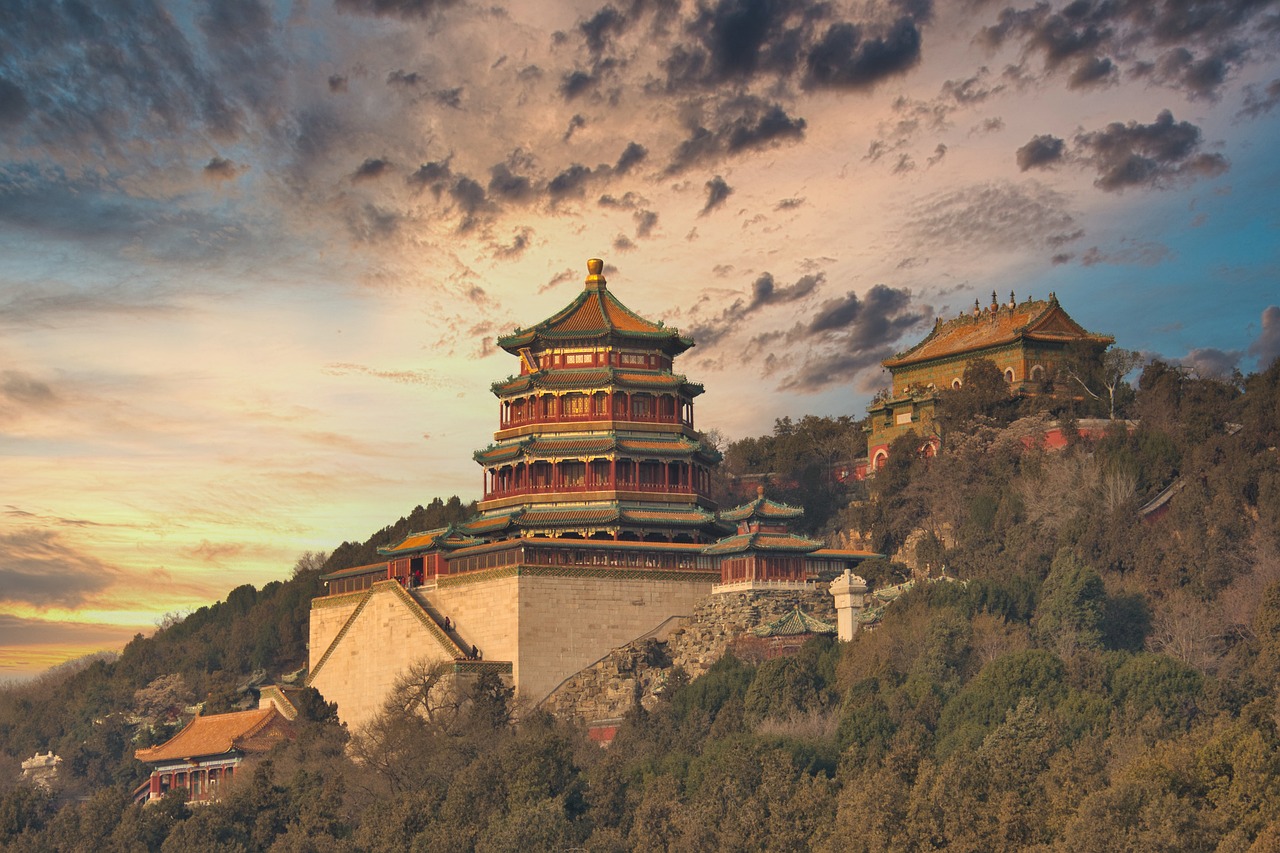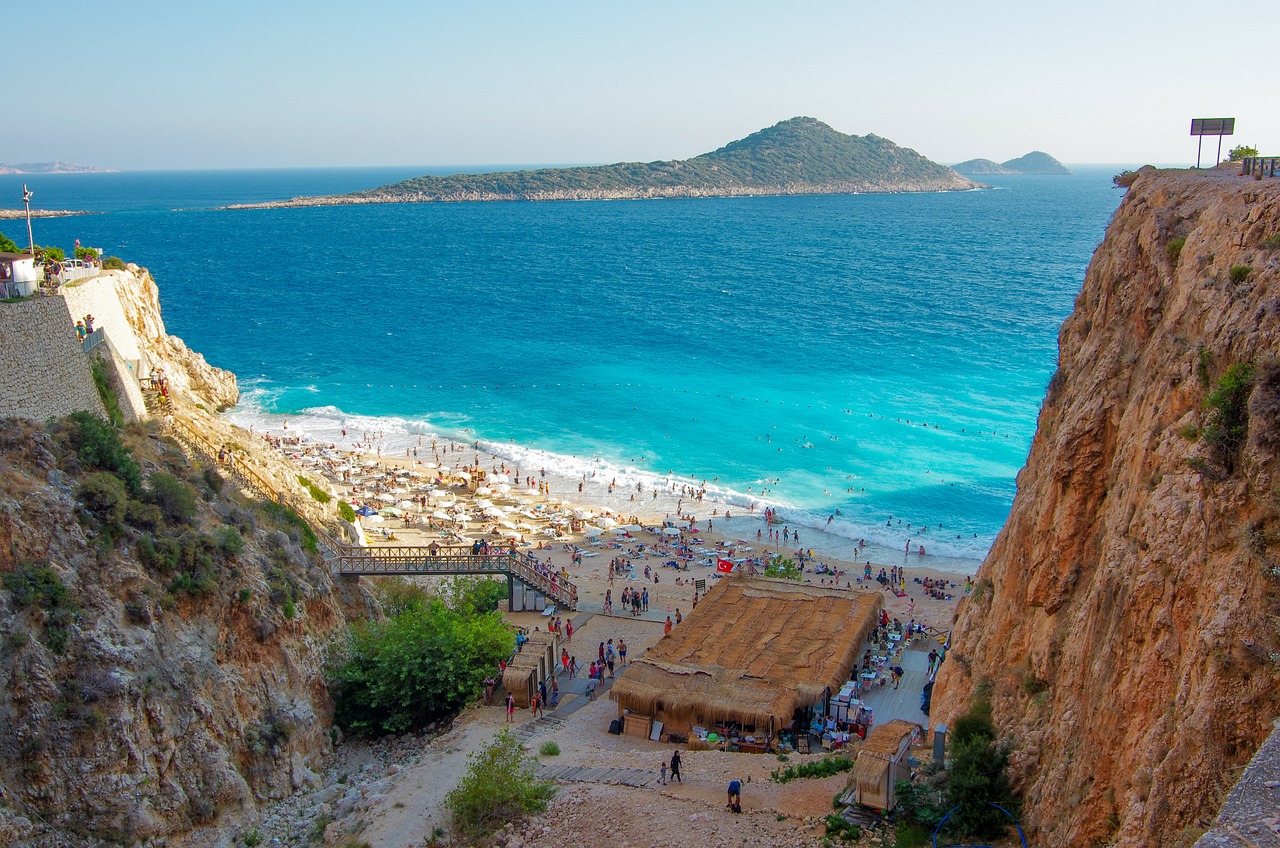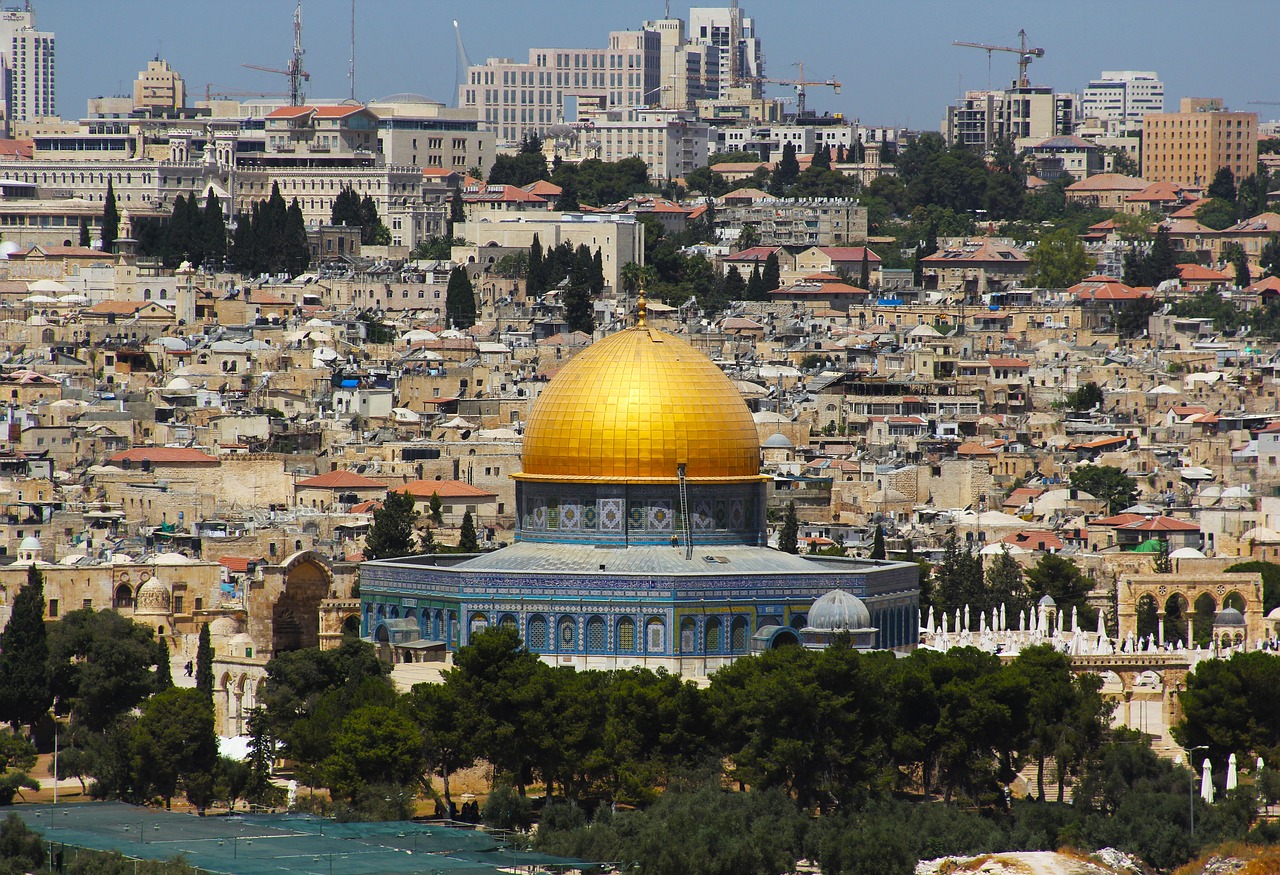Kyoto (officially Kyoto City) is a city located in the Kasnai region on the central part of Japan’s Honshu island, approximately 400 km (250 mi) west of Tokyo. It is the former capital of Japan, and is the capital of Kyoto Prefecture. It has a rich cultural heritage and is known for its historical landmarks, including temples, shrines, and gardens. Kyoto has a population of around 1.5 million people and is one of the most popular tourist destinations in Japan.
In comparison to other major cities like Tokyo, Kyoto is more laid-back and traditional, with a slower pace of life. While Tokyo is known for its futuristic skyscrapers and modern technology, Kyoto is known for its temples and traditional architecture. Tokyo is the political and economic capital of Japan, so much busier, more modern and new. On the other hand, Kyoto is a storehouse of traditional Japanese culture. So if you want to see what modern Japan is all about, visit Tokyo. And if you want to experience traditional Japan, visit Kyoto.
Other cities like Paris and Rome may offer historical landmarks, but Kyoto’s cultural significance and preservation make it a one-of-a-kind destination.
Short History
Kyoto was the imperial capital of Japan from 794 to 1868 and played a significant role in the country’s political and cultural development. Kyoto is home to numerous temples, shrines, gardens, and historic sites, many of which are designated as UNESCO World Heritage Sites. The city has undergone several transformations throughout its history, including fires, wars, and urban renewal projects, but has managed to preserve its traditional architecture, culture, and customs. Today, Kyoto is a modern and vibrant city that blends its rich heritage with contemporary art, cuisine, and technology.
Architecture
Kyoto has been the center of Japanese culture and politics for centuries and was the capital of Japan for over 1,000 years. As a result, Kyoto has a wide variety of architectural styles that showcase its long history, from ancient shrines and temples to traditional wooden houses and modern buildings.
One of the most iconic architectural styles in Kyoto is the traditional Japanese style, which emphasizes simplicity, natural materials, and harmony with nature. This style can be seen in many of the city’s temples, shrines, and traditional houses, which feature wooden beams and columns, sliding doors, and paper screens.
Another prominent style in Kyoto is the Chinese-style architecture, which was introduced to Japan in the 7th century. This style is characterized by ornate roofs and decorations, intricate carvings, and vibrant colors. It can be seen in many of the city’s temples and shrines, including the Kiyomizu-dera Temple and the Tenryu-ji Temple.
Kyoto also has examples of Western-style architecture, which was introduced to Japan during the Meiji Restoration in the late 19th century. This style is characterized by the use of concrete, brick, and steel, and can be seen in many of the city’s modern buildings and public institutions.
Overall, the architectural styles in Kyoto reflect the city’s long and diverse history, and are a testament to its cultural and artistic achievements.
Museums and Galleries
Kyoto is a city rich in history and culture, and as such, it has a wealth of fascinating museums and galleries to explore. Here are some of the most interesting ones to visit:
- Kyoto National Museum – This museum features an extensive collection of Japanese art and artifacts, including Buddhist sculpture, calligraphy, and ceramics.
- Kyoto International Manga Museum – This unique museum is dedicated to manga, Japan’s popular comic book art form. It houses a vast collection of manga, including rare and out-of-print titles, as well as exhibitions on the history and impact of manga.
- Miho Museum – This museum is located in the Shiga Prefecture, just outside of Kyoto, and is home to a stunning collection of art and artifacts from around the world, including ancient Egyptian, Greek, and Roman pieces, as well as Japanese art and ceramics.
- Kyoto Museum of Traditional Crafts – This museum showcases the traditional crafts of Kyoto, including textiles, pottery, lacquerware, and more. Visitors can learn about the history and techniques of these crafts and even try their hand at creating their own.
- The Museum of Kyoto – This museum explores the history and culture of Kyoto through its extensive collection of art, artifacts, and historical documents.
- Kitamura Museum – This museum is dedicated to the art of Japanese swords, with a collection of over 1,000 swords and related artifacts.
- Kyoto City Kyocera Museum of Art – This museum features modern and contemporary art from Japan and around the world, including paintings, sculptures, and installations.
Overall, museums and galleries of Kyoto offer visitors a unique opportunity to explore that heritage through its art and artifacts.
Landmarks and Monuments
Kyoto boasts many beautiful landmarks and monuments. Here are some of the most interesting ones to visit:
- Kinkaku-ji (Golden Pavilion): A Zen temple covered in gold leaf, located in northern Kyoto. It is one of the most popular and iconic tourist attractions in the city.
- Fushimi Inari Shrine: A Shinto shrine famous for its thousands of torii gates that form a tunnel up the mountain behind the shrine. The shrine is dedicated to Inari, the god of rice, and foxes, which are believed to be Inari’s messengers.
- Kiyomizu-dera: A historic temple located in eastern Kyoto, known for its stunning views and its wooden stage that juts out from the main hall. The temple is also home to the Otowa waterfall, where visitors can drink from one of three streams of water, each believed to have a different benefit.
- Nijo Castle: A castle located in central Kyoto that was built in the 17th century. It was the residence of the Tokugawa shoguns when they visited Kyoto and is famous for its “nightingale floors” that chirp when walked upon, alerting the guards to any potential intruders.
- Arashiyama Bamboo Grove: A beautiful bamboo forest located on the outskirts of Kyoto. The bamboo grove is a popular destination for tourists, with a path winding through the towering stalks of bamboo.
- Gion District: A traditional district located in eastern Kyoto, famous for its geisha culture. Visitors can spot geiko (geisha in Kyoto dialect) and maiko (apprentice geisha) walking along the streets and visit traditional teahouses.
- Kyoto Imperial Palace: The former residence of Japan’s Imperial Family until 1869, the palace is located in central Kyoto and is now open to the public for tours.
Overall, visitors to Kyoto will find a wealth of fascinating landmarks and monuments to explore, from ancient temples and shrines to beautiful bamboo forests and historic castles. The city’s cultural heritage and unique architecture make it a must-visit destination for anyone interested in Japanese history and culture.
Parks and Green Spaces
Kyoto is a city that values nature and green spaces, and there are many beautiful parks and gardens to explore. Here are some of the most popular ones:
- Arashiyama Bamboo Grove: Located in the western outskirts of Kyoto, the Arashiyama Bamboo Grove is a beautiful and serene forest of towering bamboo. Visitors can take a leisurely stroll along the paths and enjoy the peaceful atmosphere.
- Maruyama Park: One of the largest and most popular parks in Kyoto, Maruyama Park is famous for its cherry blossoms. In the spring, the park is filled with pink blossoms, making it a popular spot for picnics and hanami (flower viewing) parties.
- Philosopher’s Path: This scenic walking path follows a canal lined with cherry trees and passes by several temples and shrines. It’s a great place to escape the hustle and bustle of the city and enjoy a peaceful stroll.
- Kyoto Imperial Palace Park: This park is home to the Kyoto Imperial Palace, which was the residence of Japan’s imperial family until the capital was moved to Tokyo in 1868. The park is a popular spot for picnics and relaxing walks.
- Kamo River: The Kamo River runs through the heart of Kyoto and is a popular spot for walking, cycling, and picnicking. In the summer, locals and tourists alike flock to the river to enjoy the cool breeze and watch the sunset.
- Nara Park: While not technically in Kyoto, Nara Park is a short train ride away and is home to over 1,000 friendly deer that roam freely through the park. Visitors can feed the deer and take photos with them, making it a popular destination for families.
- Heian Shrine Garden: The garden at Heian Shrine is a peaceful oasis in the heart of Kyoto. It features a large pond, a waterfall, and several traditional Japanese-style buildings.
Whether you’re looking for a peaceful stroll, a picnic spot, or a place to enjoy the cherry blossoms, there’s something for everyone in Kyoto’s parks and green spaces.
Beaches
Kyoto is a landlocked city, and is not located near any beaches. However, there are several beaches that can be accessed from nearby cities such as Osaka, Kobe, and Wakayama. These beaches are mostly located on the Pacific Ocean side of Japan and are a few hours away from Kyoto by train or car:
- Rokko Island Beach (Kobe): It offers a wide stretch of sand and a great view of the nearby mountains. The beach also has a swimming area, beach volleyball courts, and several restaurants and shops nearby.
- Suma Beach (Kobe): Suma Beach is a popular destination for locals and tourists alike, and one of the most famous beaches in the Kansai region. The beach is located in Kobe, and is known for its clear blue waters, white sand, and scenic views. It is also a great spot for surfing and swimming with a lively atmosphere with beach bars and other water activities.
- Maishima Beach (Osaka): Another great beach, which is more secluded and peaceful, making it a great spot for a relaxing day by the water.
- Wakaura Beach (Wakayama): Wakaura Beach is located in Wakayama, and is known for its picturesque scenery and crystal-clear waters. It is a popular destination for swimming and sunbathing, as well as for water sports like kayaking and paddleboarding.
- Kinosaki Beach (Hyogo): This beach is a beautiful spot located in the Hyogo Prefecture, close to both Osaka and Kobe. The beach is known for its stunning views and crystal-clear waters, and is a popular spot for swimming and sunbathing.
- Awaji Beach (Awaji Island): Awaji Beach is a scenic beach located on Awaji Island, just off the coast of Kobe. The beach is known for its clear blue waters, white sand, and stunning views of the surrounding mountains.
- Shirahama Beach (Wakayama): It is a popular destination located in Wakayama. The beach is known for its warm waters, soft sand, stunning scenery, and natural hot springs. It is also a great spot for water sports like snorkeling, diving, and surfing. Visitors can also enjoy water activities such as parasailing and jet skiing, and explore nearby attractions such as the Engetsu Island, a unique natural rock formation.
Overall, while Kyoto itself does not have any beaches, you can easily explore nearby areas and enjoy a variety of beach experiences.
Shopping Districts
Kyoto is a great destination for shopping enthusiasts. Here are some of the best shopping districts in Kyoto:
- Shinkyogoku: Located in the heart of Kyoto, Shinkyogoku is a bustling pedestrian shopping street that offers a wide range of products, from traditional Japanese souvenirs to trendy fashion items.
- Teramachi-dori: This street runs parallel to Shinkyogoku and is a great place to find unique souvenirs, ceramics, and antique items. The street is also home to a number of tea shops and traditional Japanese confectionery stores.
- Nishiki Market: Known as “Kyoto’s Kitchen,” Nishiki Market is a popular destination for foodies. It is a narrow shopping street that offers a wide variety of traditional Japanese food items, including fresh seafood, pickles, and sweets.
- Kyoto Station: One of the largest transportation hubs in Kyoto, Kyoto Station is also a great place for shopping. The station boasts a large shopping complex with a wide range of shops, including fashion boutiques, souvenir shops, and electronics stores.
- Kawaramachi: Located in downtown Kyoto, Kawaramachi is a popular shopping district with a mix of traditional and modern shops. The area is home to large department stores, such as Takashimaya and Marui, as well as smaller shops selling everything from traditional Japanese crafts to the latest fashion trends.
Overall, Kyoto offers a diverse range of shopping experiences, from traditional Japanese souvenirs to trendy fashion items. Whether you’re looking for unique gifts or the latest gadgets, there’s something for everyone in this marvelous city.
Food and Drink
Kyoto is known for its traditional cuisine, which includes a variety of unique dishes and local specialties. Here are some food and drink options to try when in Kyoto:
- Kaiseki Ryori: Kaiseki is a traditional multi-course Japanese meal that originated in Kyoto. It typically consists of a series of small, intricate dishes that showcase local, seasonal ingredients.
- Yudofu: Yudofu is a simple, yet delicious dish that consists of boiled tofu served with dipping sauce. It is a popular winter dish in Kyoto and can be found at many restaurants throughout the city.
- Matcha: Kyoto is famous for its high-quality matcha, which is a finely ground powder made from green tea leaves. You can enjoy matcha in various forms, such as matcha tea, matcha lattes, and matcha sweets.
- Kyo-ryori: Kyo-ryori is traditional Kyoto-style cuisine that incorporates seasonal and local ingredients. Some popular Kyo-ryori dishes include Obanzai (an assortment of small dishes), Nishin soba (soba noodles topped with herring), and Tofu Dengaku (grilled tofu with miso sauce).
- Sake: Kyoto is also known for its sake production. You can visit local breweries to learn about the process and taste different types of sake.
- Wagashi: Wagashi are traditional Japanese sweets that often incorporate matcha and other local ingredients. Many wagashi shops can be found throughout Kyoto, and they make for a perfect souvenir or snack.
Overall, Kyoto offers a unique culinary experience that is steeped in tradition and local ingredients. There are many options to choose from, and trying a variety of dishes and drinks is highly recommended.
Transportation
Kyoto has an extensive public transportation system that includes buses, trains, and subways. The easiest and most convenient way to get around is by bus, which operates on an extensive network throughout the city. Kyoto’s bus system is operated by two companies: Kyoto City Bus and Keihan Bus. Visitors can purchase a one-day pass that allows for unlimited rides on both bus lines. Another popular mode of transportation is the subway, which operates two lines throughout the city. However, the subway is not as extensive as the bus system and may not reach all areas of interest.
Bicycles are also a popular way to explore Kyoto. Many streets have designated bike lanes, and there are several rental options available throughout the city. Taxis are available but can be expensive, especially during peak hours or late at night. Walking is also a great option, especially in the city center, which has many pedestrian-friendly areas. Additionally, Kyoto is a great city to explore on foot, as many of its attractions are located in close proximity to each other.
Safety
Kyoto is generally considered a safe city for tourists and locals alike. The crime rate is relatively low compared to other cities in Japan and around the world. However, like any major city, visitors should take basic precautions such as being aware of their surroundings, keeping valuables secure, and avoiding walking alone in isolated areas at night. Additionally, it is important to be aware of any potential natural disasters such as earthquakes or typhoons, as Japan is located in an active seismic zone. It’s also important to be mindful of local customs and cultural practices to avoid any unintentional misunderstandings.
Expensive or Cheap
Kyoto is considered a moderately expensive city to live and visit in Japan. The cost of living can vary depending on the area, with some neighborhoods being more affordable than others. Accommodation, transportation, and food can be relatively expensive, especially in tourist areas. However, compared to other major cities in Japan such as Tokyo and Osaka, Kyoto can be considered less expensive.
Best Time to Travel
The best time to visit Kyoto is during the spring (March to May) and fall (September to November) seasons. During these times, the weather is mild and pleasant, and the city is at its most picturesque with cherry blossoms in the spring and autumn foliage. Additionally, there are several festivals and events during these seasons, such as the famous cherry blossom festival known as “hanami” and the Jidai Matsuri festival in October. However, it is important to note that these seasons are also peak tourist times, so it may be more crowded and expensive. The summer months (June to August) can be hot and humid, while winter (December to February) can be cold and snowy.
Date Ideas and Activities
Kyoto is a city of ancient culture, with a wealth of romantic and cultural experiences to offer for couples. Here are some date ideas, activities, and experiences to enjoy in Kyoto:
- Visit the Fushimi Inari Shrine: Explore the famous red gates of the Fushimi Inari Shrine with your partner, and take a romantic stroll through the winding paths of the shrine.
- Take a romantic boat ride on the Hozu River: Enjoy the beautiful scenery of the Hozu River while taking a relaxing boat ride with your partner.
- Try a traditional tea ceremony: Experience a traditional Japanese tea ceremony, where you and your partner can learn about the art and history of tea in Japan.
- Visit the Kiyomizu-dera Temple: Explore the stunning Kiyomizu-dera Temple and take in the breathtaking view of Kyoto from the temple’s balcony.
- Enjoy a romantic walk through the Arashiyama Bamboo Grove: Take a leisurely stroll through the tranquil Arashiyama Bamboo Grove and enjoy the peaceful atmosphere with your partner.
- Have a picnic in Maruyama Park: Pack a picnic and enjoy a relaxing afternoon in Maruyama Park, surrounded by cherry blossoms during the spring season.
- Attend a traditional Japanese performance: Watch a traditional Japanese performance such as a kabuki or bunraku play, or a maiko dance performance.
- Visit the Kyoto Imperial Palace: Take a tour of the Kyoto Imperial Palace and learn about the history and culture of the Japanese imperial family.
- Go shopping in Gion: Explore the traditional streets of Gion and indulge in some shopping while taking in the beauty of the old Japanese architecture.
- Experience the Gion Festival: Attend the famous Gion Festival held annually in July, where you can see traditional Japanese parades and performances.
From visiting ancient temples and shrines to enjoying the serene beauty of nature, Kyoto has something to offer for everyone.
Fun and Interesting Facts
From its stunning temples and shrines to its unique food and festivals, there are many interesting and fun facts about Kyoto that are sure to amaze and entertain:
- Former Capital of Japan: Kyoto was once the capital of Japan and served as the emperor’s residence from 794 until 1868.
- Home to World Heritage Sites: Kyoto is home to 17 UNESCO World Heritage Sites, including Kiyomizu-dera Temple, Ginkaku-ji Temple, and the historic monuments of ancient Kyoto.
- Geisha District: The Gion district of Kyoto is known for its geisha culture, where geiko (geishas) entertain guests with traditional music, dance, and conversation.
- Bamboo Forest: The Arashiyama bamboo forest in Kyoto is one of the most photographed places in Japan and is famous for its towering stalks of bamboo.
- Kyoto Cuisine: Kyoto is famous for its traditional cuisine, which includes dishes like tofu, matcha tea, and kaiseki (multi-course meals).
- Cherry Blossoms: In the spring, Kyoto’s streets and parks are filled with beautiful cherry blossom trees, making it one of the best places in Japan to see the sakura.
- Tea Ceremony: The traditional Japanese tea ceremony, or chado, has deep roots in Kyoto and is a popular cultural experience for visitors.
- Nishiki Market: Nishiki Market is a bustling indoor market in Kyoto that sells a variety of fresh seafood, produce, and traditional Kyoto snacks.
- Samurai Culture: Kyoto has a rich samurai culture, and visitors can learn about samurai history and traditions at museums and historic sites throughout the city.
- Festivals: Kyoto is home to many unique festivals, including the Gion Matsuri, one of the largest and most famous festivals in Japan.
These facts only scratch the surface of what this amazing city has to offer. Whether you’re a history buff, a foodie, or just looking to experience something new and exciting, Kyoto is a must-visit destination in Japan.
Conclusion
Kyoto is a city in Japan that is rich in culture, history, and natural beauty. It is a city that combines tradition and modernity, with ancient temples and shrines juxtaposed against modern architecture. The city is known for its traditional arts, such as tea ceremony, flower arrangement, and pottery, and is a center of Buddhism and Shintoism. Kyoto is also home to numerous parks and gardens, providing visitors with the opportunity to experience the natural beauty of Japan. From its historical landmarks to its natural beauty, Kyoto has something to offer for everyone. Whether you are interested in culture, history, food, or nature, Kyoto is a destination that is worth exploring.



